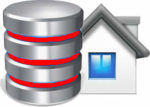Oracle 10G Database
Oracle 10G launched on 24th September 2003 and I was lucky enough to attend the London launch on 24th September 2003 at the Odeon Leicester Square.
The cinema most widely known for it’s film premieres was packed, hardly any seats left in the house, after everybody had tucked into their free popcorn and free drinks the show began.
The content of the two main presentations was not technical enough for me, but gave a wide overview of what grid computing is and how it can improve the load balancing of our systems across all our company servers. The talks concentrated on 3 main products including the 10G Application Server, 10G Database and Enterprise Manager 10G.
At the moment my company has no need for grid computing, and probably never will, but Oracle does state however that you can start your organisation off with two small pentium based servers attached together in the form of a grid and let it grow from there. Oracle certainly loves talking a lot about Linux now (obviously hates talking about Microsoft) and want us to all be using Oracle Application Server 10G and Oracle 10G DB on a Linux platform.
But I was more interested in the new features of 10G from the point of view of the DBA and the developer, were there any new SQL functions, isit worth upgrading? Well there are several new features, including an innovative approach to complex SQL calculations: the SQL Model clause. This new multi-dimensional array function which allows you to ‘create’ or ‘query’ multi-dimensional spreadsheets within the database.
Another great addition is the inclusion of regular expressions into Oracle for pattern matching, which most of us have been using for a while in Perl and PHP etc.
LOB sizes have also been increased and given the currently allowed db block size range of 2k to 32k, the size limit now ranges from 8 to 128 terabytes.
Unlimited-size LOBs, that is, LOBs 4 gigabytes or larger in size, are supported in the following programmatic environments:
• PL/SQL using the DBMS_LOB Package
• Java using JDBC (Java Database Connectivity)
• C using OCI (Oracle Call Interface)
For more information on the new SQL enhancements, take a look at SQLImprovements PDF
Also look out for the HTML DB product which seems to be a cross between Portal and Oracle Forms, it is web based and creates graphs, reports, forms etc.. Although it does not appear to be as fully featured as Oracle Forms.
Here are some other Oracle 10g Whitepapers:
![]() Oracle 10g SQL Improvements
Oracle 10g SQL Improvements
![]() Oracle 10g HTML DB
Oracle 10g HTML DB
![]() Oracle 10g Overview
Oracle 10g Overview
![]() Oracle 10g The DB for the Grid
Oracle 10g The DB for the Grid
![]() Oracle Application Server 10g overview
Oracle Application Server 10g overview
![]() Oracle Developer Suite 10g overview
Oracle Developer Suite 10g overview
![]() The SQL Model Clause of Oracle Database 10g
The SQL Model Clause of Oracle Database 10g
